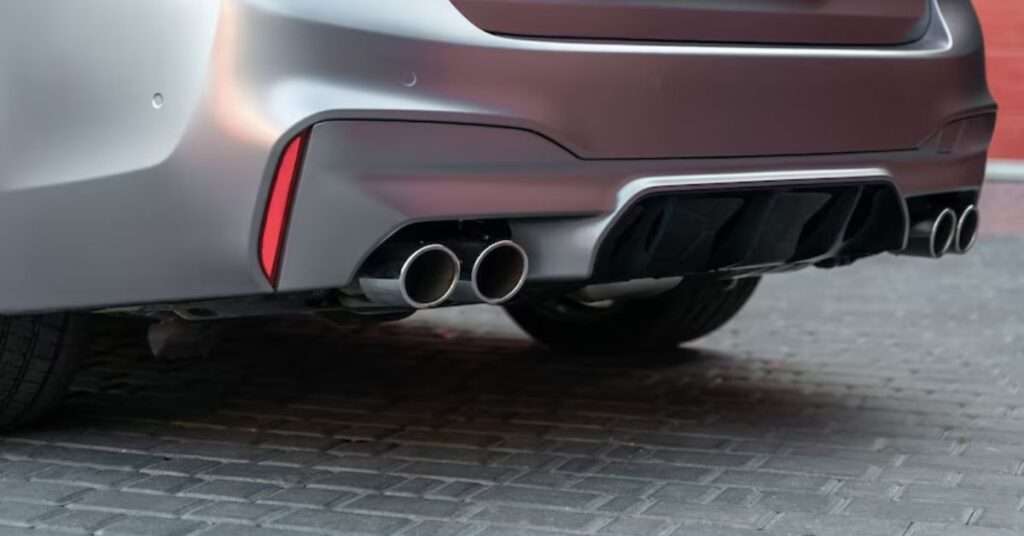A car exhaust system is made to steer dangerous gases out of the way of the motorist and other occupants, lessen emissions into the atmosphere, regulate the flow of scorching exhaust, and feed data to the car’s computing. To enhance how they perform, and drastically cut down on disturbances emissions. Innovative catalytic converter technology, included in the revamped insignia exhaust, dramatically reduces emissions while improving the automobile’s performance as a whole.
One of the first upgrades that spring to mind when talking about improving the Commodore’s performance and appearance is changing the exhaust system. In addition to making your car sound better, a high-performance exhaust system can boost your car’s torque plus horsepower and possibly even increase fuel economy. This piece delves further into the world of Commodore exhaust building components, examining the several varieties available, their advantages, and how to choose the right one for your needs.
The Logo for The 25th Anniversary
Throughout the season, the new emblem will be prominently displayed on all of Akrapovič’s two- amongst four-wheel competition platforms worldwide, such as MotoGP, DTM, and other events. The Supercross championship opener in Anaheim, California on January 9th became the first event to feature the refreshed look. The current 2015 champion, Ryan Dungey of Red Bull KTM Factory Racing, was riding a KTM 450 SX-F Factory Collection bike with the 25th-anniversary emblem on the exhausts, together with compatriots Marvin Musquin and Dean Wilson. The announcement includes a photograph of the thrilling new emblem’s debut appearance, which marks the very first of many occasions in 2016 during which the logo will have to be seen at the top level of racing.
Active Systems For Heating
The cold-start moment is when most pollution emissions happen. This is where the Active Heating Technologies’ EHC Fractal Heater comes into play, guaranteeing a quick temperature-up and preservation of the exhaust gases after the treatment technique’s heat.
Lowering The Temperature
While chauffeuring, new power plant operating tactics may cause temperatures to rise by more than 1,000 °C. These impose a strain on the resources employed. Eberspächer Purem treatments minimize the release of pollutants and lower the level of heat at which they burn.
Regulations Concerning Emissions And The Environment
The strict emissions laws that are enforce globally by governments and international organizations are the driving force behind the passenger car emissions control market. To battle air pollution and deal with the effects of global warming, these restrictions are getting stricter. They address a variety of pollutants, such as hydrocarbons, fine particulate matter (PM), nitrogen oxides (NOx), and the greenhouse gas carbon dioxide (CO2). With even stricter Euro 7 emissions regulations in the future, Europe now operates under the Euro 6 emission requirements. China VI and the EPA Tier 3 are two examples of the unique rules that apply to regions that include North America as well as Asia. Automobile manufacturers now prioritise meeting the requirements of these laws above all else, which has sparked the development of cutting-edge exhaust system emission control systems.
Technology For Selective Catalysis Reduction (SCR)
One ground-breaking invention used in diesel automobiles to reduce NOx or nitrogen oxide, production is SCR technology. AdBlue or DEF, a urea-based solution. This is introduce through the combustion stream by this system. By reacting with the emissions of NOx and turning them into innocuous ammonium as well as water vapour, the solution drastically lowers dangerous pollutants.
Gasoline Particulate Filters (Gpfs)
Gasoline Particulate Filters (GPFs) are showing up in more and more gasoline-powered cars. Similar to diesel particulate filters (DPFs) used in engines powered by diesel fuel, these filters also collect and minimize particulate matter generated by petrol engines. By trapping tiny particles and restricting their discharge into the atmosphere, GPFs help to improve the quality of the air.
Efficiency of Fuel and Decreased CO2 Emissions
The market for exhaust systems for automobiles for passengers is still largely driven by the desire for increased fuel economy and lower CO2 emissions. Automobile manufacturers are always challenge to improve the performance of engines and optimize engine exhaust systems because governments are implementing corporation average gasoline consumption (CAFE) regulations and consumers are seeking more environmentally friendly vehicles. Lightweight materials, such as high-quality stainless steel, lightweight aluminium, and innovative composite materials, are use in exhaust system development to accomplish these goals by lowering the overall weight of the vehicle and increasing fuel efficiency. The science of aerodynamics is improve along with underbody capacity maximize using compact and incorporated exhaust system designs. Furthermore, car exhaust systems specialists have been challenge to create solutions that maximise the efficiency associated with these reduced engine designs while adhering to emissions standards imposed by the trend towards reduced engines with turbocharging.
Systems with Two Exhausts and Active Valves
Active variable dual-exhaust systems allow drivers to personalize their driving experiences. The aforementioned systems have movable valves that change the flow of the car exhaust route, offering a variety of performance levels and sound submissions, from a quiet and economical configuration to a loud and effective one.
Final Words:
The automobile sector has made a deliberate attempt to balance effectiveness, reliability, as well as environmental responsibility, as evidenced by the recent development of car exhaust systems.
Also, read: Benefits of Electric Cars: Why You Should Make the Switch

